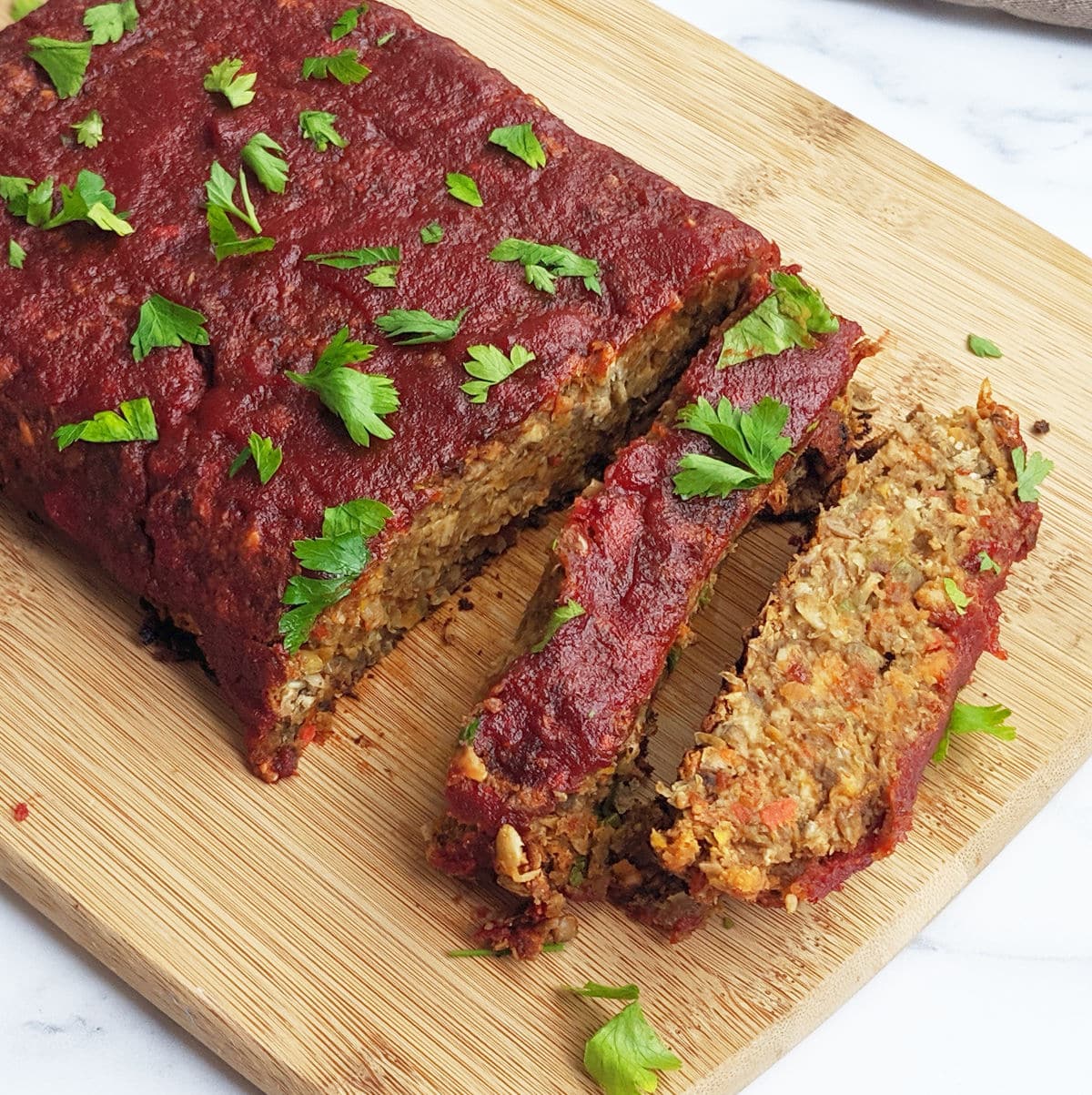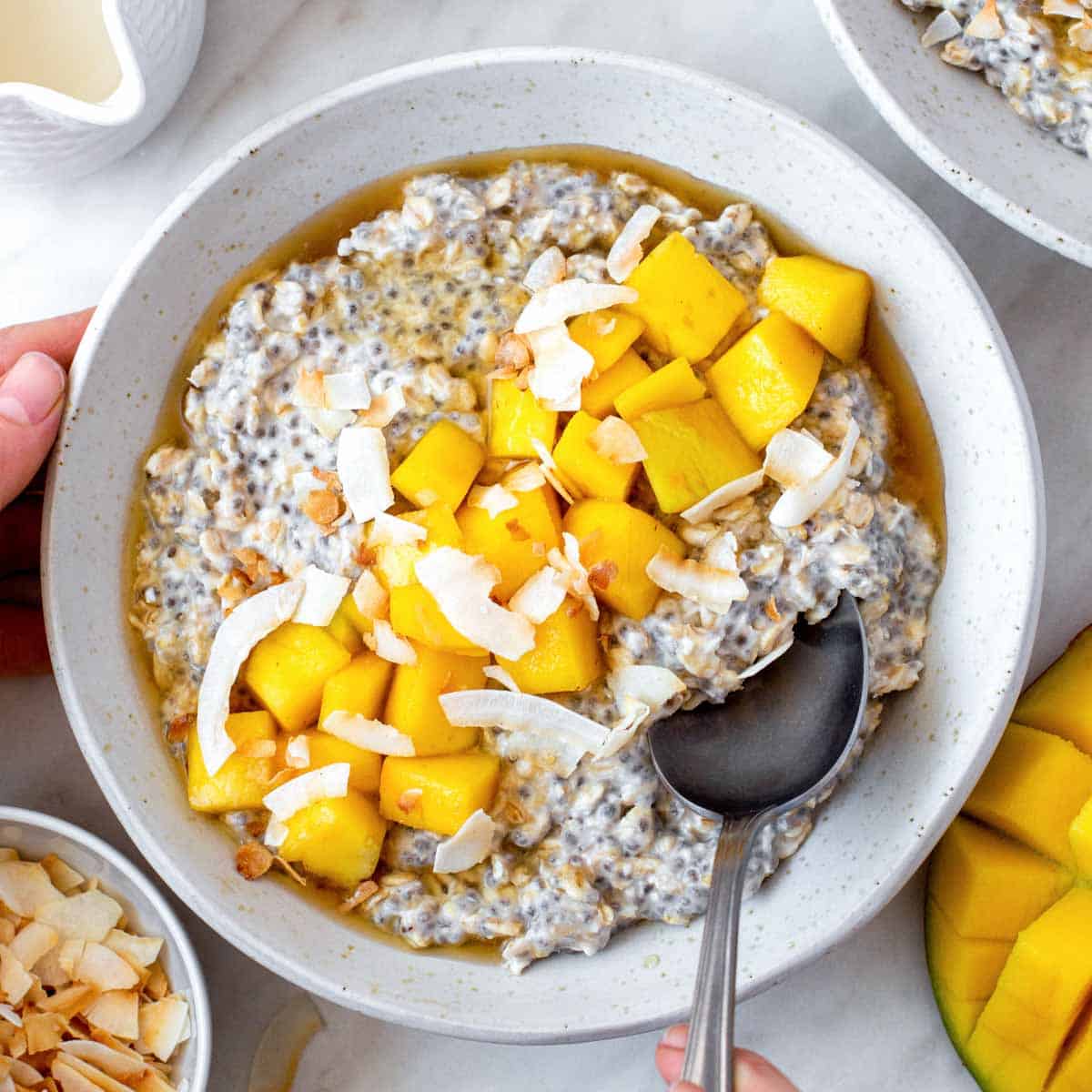This Korean BBQ sauce recipe packs layers of deep umami flavor. It’s savory, sweet, spicy, and a little tangy, and is perfect for marinades, sauces, and more! The best part—it’s ready in just 10 minutes!
This post may contain affiliate links. Read my policy page for more information.

If you’re a fan of Korean food, you’ll love this homemade Korean BBQ sauce!
It’s a mix between my vegan BBQ sauce and my easy stir-fry sauce and is great to use in a variety of dishes.
This recipe is naturally vegan, and can be made gluten-free and soy-free with just one simple swap!
What is Korean BBQ sauce
The roots of today’s Korean BBQ can be found in traditional Korean barbecue, a cooking style that dates back centuries.
Korean barbecue, also known as “Gogi-gui,” involves grilling various meats, such as beef, pork, and chicken, at the table. The sauce, known as “ssamjang,” is an essential component of this dining experience. Ssamjang is a savory and spicy condiment made by blending fermented soybean paste (doenjang), red chili pepper paste (gochujang), sesame oil, garlic, and other seasonings. Asian pears are also often added as a tenderizer.
This sauce enhances the flavors of grilled meats, providing a delightful balance of umami, heat, and depth. Over time, Korean BBQ sauce has gained popularity worldwide, captivating taste buds and adding a distinctive Korean flair to culinary creations beyond traditional barbecues.
Why you’ll love this recipe
- A flavor-packed condiment. This sauce is beyond-flavorful and can elevate any dish you add it to. The sesame oil, scallions, garlic, and ginger really take it to the next level, adding so much depth of flavor.
- Versatile and customizable. It goes so well on almost anything, from tofu and tempeh to vegan steaks, vegetables, rice, noodles, and more!
- Minimal effort is needed. Not only is this Korean BBQ sauce delicious, but it’s also quick and easy to prep. All you need to do is add everything to a saucepan and simmer until thickened!
- No special equipment is required, just a saucepan, and a whisk! This means that you won’t need a blender or food processor.
Ingredient notes

Here are the main ingredients you’ll need to make it:
- Low-sodium soy sauce: You can use tamari if you need to make this recipe gluten-free. For a soy-free version, use coconut aminos instead.
- Rice vinegar: It adds tanginess which balances out the saltiness of the soy sauce. You can substitute it with rice wine vinegar or apple cider vinegar.
- Sweetener of choice: You can use either maple syrup, brown sugar, or agave syrup. Coconut sugar may also work but will alter the flavor.
- Toasted sesame oil: This is a potent ingredient that adds a ton of flavor. It’s nutty and aromatic, and you only need a little bit to taste.
- Chili garlic sauce: You can use any chili sauce of your choice like sriracha or gochujang (Korean chili paste). If you can’t find either, here are some other great gochujang substitutes to try.
- Aromatics: No Korean recipe is complete without fresh ginger, garlic, and green onion. They add depth of flavor and some heat.
- Cornstarch: For thickening the sauce. You can also use arrowroot starch, but you may need to add slightly more.
- Spices: Black pepper and red pepper flakes are the two main ones you’ll need. Feel free to adjust the amounts to taste.
Scroll to the recipe card below for the full recipe and measurements.
How to make Korean BBQ sauce
In a medium-sized pot, add soy sauce, sesame oil, rice vinegar, garlic and ginger, chili sauce, red pepper flakes, black pepper, and sugar.

Stir and bring to a simmer over medium-high heat.
In the meantime, make the cornstarch slurry. In a small bowl whisk cornstarch with cold water until dissolved.
Slowly pour the cornstarch slurry into the sauce, stirring constantly. Cook for 2-3 minutes, or until thickened to your desired consistency and the sauce coats the back of a spoon.

Keep in mind that the mixture will thicken even further once it’s completely cooled down.
Once ready, remove the sauce from the heat and let it cool down.
Then, add the green onions (if using) and stir.

Pour the Korean BBQ sauce into a jar or an airtight container, and either use it right away or store covered with a lid for later.

Top Tips
- Use low-sodium soy sauce! Since soy sauce is the main ingredient here, it’s important to use reduced-sodium one to avoid the BBQ sauce from getting overly salty.
- Adjust the flavors to taste. You can add more or less brown sugar depending on how sweet you like the sauce to be. You can also adjust the amounts of rice vinegar, garlic, ginger, and sriracha.
- Whisk the cornstarch with cold water before adding it to the sauce. This way you’ll make sure that are no clumps of cornstarch.
- Whisk constantly. Once you add the cornstarch mixture, the sauce will start to thicken immediately. It’s important to whisk non-stop to prevent the bottom from burning.
- Adjust the consistency if desired. If you prefer a thick sauce, simmer the mixture for 4-5 minutes. For a thinner sauce, simmer for 2 minutes only.
FAQ’s
American BBQ sauce is tomato-based, with the main ingredient usually being tomato puree or ketchup.
Korean BBQ sauce is soy-based, with the main ingredient being soy sauce.
Other ingredients like sesame oil and rice vinegar are also included in the Korean version, and they’re not usually present in regular BBQ sauce.
Yes, this recipe is mildly spicy, but you can always adjust the heat to taste.
If you want to make it spicier, add more sriracha or red pepper flakes.
For a less spicy sauce, omit either the sriracha or red pepper flakes.
This recipe uses soy sauce, which contains gluten. However, you can easily make it gluten-free by using gluten-free soy sauce, also known as tamari. You can find it in any big grocery store.
Simply omit the sesame oil. To add back in flavor, add a tablespoon of toasted sesame seeds instead.

How to use it
There are many uses for this easy Korean barbecue sauce recipe. And since it lasts for a few weeks in the fridge, you can make a big batch, store it in a mason jar, and use it in any meal that you need to add flavor to.
Just like with my air fryer marinated tempeh, you can use it to marinate crispy tofu, seitan steaks, vegan bulgogi (Korean BBQ beef), or mock meats (such as store-bought vegan chicken tenders).
This recipe is also great to use in any type of stir fry, fried rice, or noodle dish. I love to use it in my vegan tofu stir fry when I’m looking for a quick and easy fix for my weeknight dinner.
Not only that, but it also makes for a delicious dipping sauce for roasted vegetables, air fryer potstickers, crispy spring rolls, lettuce wraps, and even my vegan coconut shrimp.
Storage
Let the sauce cool to room temperature, then transfer it to an airtight container or a mason jar and store it in the fridge for up to 2 weeks.

More delicious sauces
Sauces are a great way to level up the flavor of any dish without too much effort. Here are our reader’s favorites!
- Super Easy Vegan Stir Fry Sauce goes well on ANY stir fry and is ready in 5 minutes and with just 6 ingredients!
- Homemade BBQ sauce is superior to store-bought ones, and this Vegan BBQ Sauce will prove just that!
- My Vegan Tartar Sauce is light, creamy, and made with no oil! It’s perfect for dipping in veggies, vegan fish fillets, or vegan coconut shrimp.
- Don’t give up on cheese just because you’re vegan! This is the Best Vegan Nacho Cheese and it will satisfy all of your cravings.
- And if you want to learn more about substituting soy sauce and its alternatives, check out my post about 10+ Best Coconut Aminos Substitutes.
Want to Save This Recipe?
Enter your email below and we’ll send it straight to your inbox! Plus, get weekly free recipes!
By submitting this form, you consent to receive emails from Health My Lifestyle.

Easy Korean BBQ Sauce
Ingredients
- ¾ cup low-sodium soy sauce or tamari for gluten-free
- ⅓ cup maple syrup or light brown sugar
- 2 tablespoons rice vinegar
- 1 tablespoon minced garlic
- 1 tablespoon grated ginger
- 1 tablespoon chili garlic sauce or sriracha or gochujang
- 1 teaspoon toasted sesame oil (optional)
- ¼ teaspoon black pepper
- 1 tablespoon cornstarch
- 1 tablespoon water
- 1 teaspoon red pepper flakes (optional)
- 1 scallions, finely chopped (optional)
Instructions
- In a medium-sized saucepan, add soy sauce, maple syrup, rice vinegar, garlic and ginger, chili sauce, sesame oil (if using), and black pepper.¾ cup low-sodium soy sauce, ⅓ cup maple syrup or light brown sugar, 2 tablespoons rice vinegar, 1 tablespoon minced garlic, 1 tablespoon grated ginger, 1 tablespoon chili garlic sauce, 1 teaspoon toasted sesame oil, ¼ teaspoon black pepper
- Stir and bring to a simmer over medium heat. In the meantime, make the cornstarch slurry. In a small bowl whisk cornstarch with cold water until dissolved.1 tablespoon cornstarch, 1 tablespoon water
- Lower the heat and slowly pour the cornstarch slurry into the sauce, stirring constantly. Cook for 2-3 minutes, or until thickened to your desired consistency and the sauce coats the back of a spoon. If you prefer spicy bbq sauce, add red pepper flakes at this point and stir them into the sauce.1 teaspoon red pepper flakes
- Once ready, remove the sauce from the heat and let it cool down. Then, add the green onions (if using) and stir.1 scallions, finely chopped
- Pour the Korean BBQ sauce into a jar or an airtight container, and either use it right away or store covered with a lid for later.






